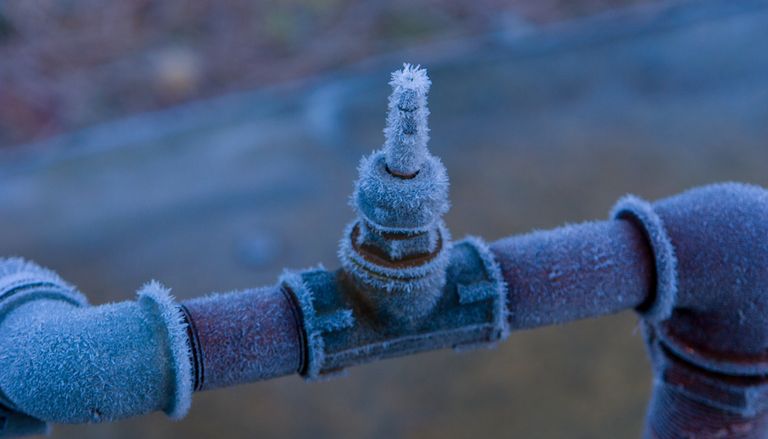Protecting Your Pipes from Freezing: Top Tips
Protecting Your Pipes from Freezing: Top Tips
Blog Article
They are making a few great annotation about How to prepare your home plumbing for winter weather as a whole in this post followed below.

Winter can ruin your pipes, particularly by freezing pipelines. Here's exactly how to avoid it from happening and what to do if it does.
Intro
As temperatures drop, the danger of frozen pipelines rises, potentially leading to pricey repair services and water damages. Comprehending how to stop icy pipelines is vital for property owners in cold environments.
Avoidance Tips
Protecting susceptible pipes
Wrap pipelines in insulation sleeves or utilize heat tape to secure them from freezing temperatures. Focus on pipelines in unheated or external areas of the home.
Home heating methods
Maintain interior spaces appropriately warmed, particularly areas with pipes. Open up closet doors to permit cozy air to distribute around pipes under sinks.
Just how to identify icy pipelines
Try to find decreased water circulation from faucets, unusual smells or sounds from pipes, and noticeable frost on revealed pipes.
Long-Term Solutions
Architectural adjustments
Consider rerouting pipelines away from outside walls or unheated locations. Include added insulation to attics, cellars, and crawl spaces.
Upgrading insulation
Purchase high-quality insulation for pipelines, attic rooms, and walls. Correct insulation assists keep constant temperature levels and lowers the threat of icy pipelines.
Safeguarding Outside Plumbing
Yard hose pipes and outdoor faucets
Disconnect and drain pipes garden hose pipes before wintertime. Set up frost-proof spigots or cover outdoor taps with insulated caps.
Comprehending Frozen Pipes
What causes pipes to freeze?
Pipelines freeze when subjected to temperature levels below 32 ° F (0 ° C) for prolonged durations. As water inside the pipes freezes, it broadens, taxing the pipe walls and potentially causing them to break.
Threats and damages
Icy pipes can cause supply of water disruptions, home damages, and pricey repair work. Ruptured pipes can flooding homes and cause extensive architectural damages.
Signs of Frozen Pipes
Determining icy pipes early can avoid them from rupturing.
What to Do If Your Pipelines Freeze
Immediate actions to take
If you presume icy pipelines, maintain faucets open up to ease pressure as the ice melts. Utilize a hairdryer or towels soaked in hot water to thaw pipelines gradually.
Final thought
Avoiding frozen pipelines calls for positive steps and quick responses. By comprehending the causes, signs, and safety nets, property owners can protect their pipes during winter.
5 Ways to Prevent Frozen Pipes
Drain Outdoor Faucets and Disconnect Hoses
First, close the shut-off valve that controls the flow of water in the pipe to your outdoor faucet. Then, head outside to disconnect and drain your hose and open the outdoor faucet to allow the water to completely drain out of the line. Turn off the faucet when done. Finally, head back to the shut-off valve and drain the remaining water inside the pipe into a bucket or container. Additionally, if you have a home irrigation system, you should consider hiring an expert to clear the system of water each year.
Insulate Pipes
One of the best and most cost-effective methods for preventing frozen water pipes is to wrap your pipes with insulation. This is especially important for areas in your home that aren’t exposed to heat, such as an attic. We suggest using foam sleeves, which can typically be found at your local hardware store.
Keep Heat Running at 65
Your pipes are located inside your walls, and the temperature there is much colder than the rest of the house. To prevent your pipes from freezing, The Insurance Information Institute suggests that you keep your home heated to at least 65 degrees, even when traveling. You may want to invest in smart devices that can keep an eye on the temperature in your home while you’re away.
Leave Water Dripping
Moving water — even a small trickle — can prevent ice from forming inside your pipes. When freezing temps are imminent, start a drip of water from all faucets that serve exposed pipes. Leaving a few faucets running will also help relieve pressure inside the pipes and help prevent a rupture if the water inside freezes.
Open Cupboard Doors
Warm your kitchen and bathroom pipes by opening cupboards and vanities. You should also leave your interior doors ajar to help warm air circulate evenly throughout your home.

As a passionate reader on How to prepare your home plumbing for winter weather, I imagined sharing that excerpt was a great idea. In case you liked our post kindly remember to share it. I take joy in your readership.
Call Today Report this page